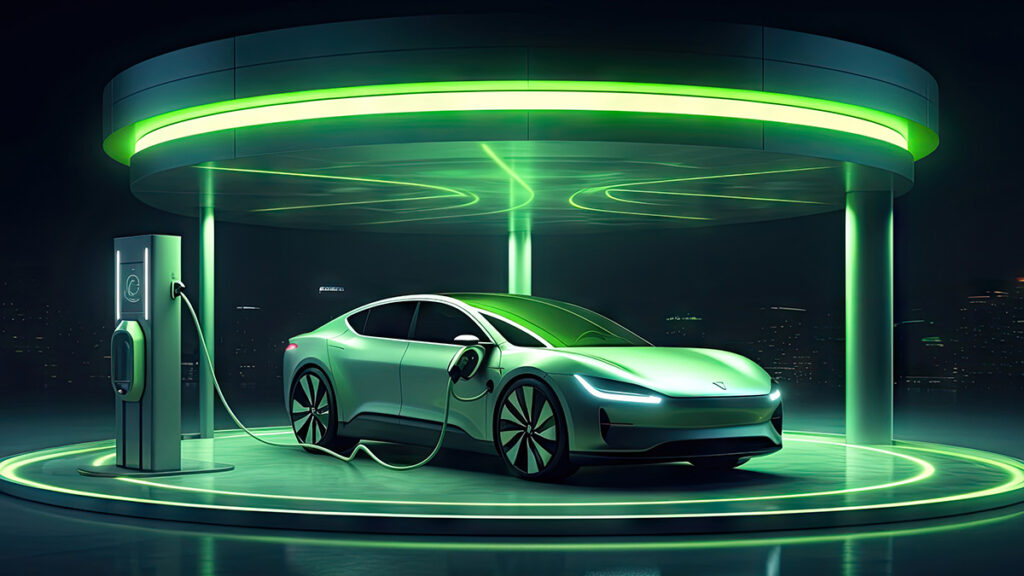Xiaomi has unveiled further details about its inaugural electric vehicle, the SU7, including its HyperOS IoT ecosystem, marking a significant milestone for the Chinese smartphone giant’s entry into the EV market.
The anticipation around Xiaomi’s first electric car has been building since early patent details began circulating online last year. Lei Jun, Founder, Chairman, and CEO of Xiaomi Group, addressed these rumours at a recent event, offering more insight into the electric smart sedan.
Lei Jun spoke about the challenges of innovating within the “century-old automotive industry” which he believes is ripe for disruption. He emphasised Xiaomi’s commitment to integrating “fundamental core technologies” into its vehicles to ensure they enhance the user’s daily life and position Xiaomi among the top five global automakers in the near future.
“Our aim is to compete with Porsche and Tesla, and to deliver a dream car for the new automotive era,” Lei Jun declared.
At the heart of the SU7 lies Xiaomi’s proprietary chassis and electrical system, engineered to accommodate both 400V and 800V charging infrastructures. The company has announced a variety of battery and motor configurations for the vehicle, reminiscent of traditional internal combustion engine setups.
The HyperEngine V6 and V6s engines initiate the lineup, providing 295bhp and 370bhp respectively, incorporating both 400V and 800V electrical systems. The pinnacle HyperEngine V8s model is expected to “set a worldwide benchmark for E-motors,” achieving up to 27,200 rpm and delivering a formidable 670bhp, promising acceleration on par with supercars.
Xiaomi’s CEO also highlighted that the 800V variant of the SU7 could gain 137 miles of range in just five minutes from a rapid charging station, with a 15-minute charge extending the range by 317 miles.
The SU7 is set to offer advanced levels of autonomous driving, facilitated by leading-edge perception algorithms, the vehicle’s ability to adapt to live road conditions, sophisticated obstacle detection, and machine learning of driving patterns and user preferences.
Furthermore, Xiaomi has developed an advanced AI model for the next-gen of autonomous parking, designed to handle complex parking scenarios, including those involving elevators, through real-time observation and dynamic adjustment.
Inside the SU7, Xiaomi is integrating an advanced, smartphone-inspired ecosystem alongside impressive EV features. The vehicle sports a “human-centric” interaction design, boasting a 16.1-inch 3K central console, a 56-inch HUD, a 7.1-inch rotating dashboard, and dual seat-back extension mounts for secure tablet storage for rear passengers.
Powered by the Snapdragon 8295 in-car processor, the system supports high-level AI, named Xiaomi HyperMind, and ultra-fast processing. Xiaomi’s Smart Cabin aims to deliver a tablet-like interactive experience, ensuring an intuitive and instantly familiar user interface.
Upon connecting a phone to the cabin, the console automatically displays an icon for seamless access to the phone’s interface with a simple touch. The in-car OS integrates with “mainstream applications,” including Xiaomi’s tablet app ecosystem, expected to expand to over 5,000 apps shortly.
Additionally, users can customise the car’s infotainment system by pinning their favourite smartphone apps for in-vehicle use. Lei Jun envisions the SU7 as a key component of the “Human x Car x Home” smart ecosystem, with the car supporting over 1,000 Xiaomi smart home devices for seamless integration and automation scenarios, thereby creating a comprehensive CarIoT ecosystem. It also includes Apple CarPlay support to cater to iPhone users.
Apple had also raised plans to build their first ever EV but have since scrapped the ambition following previous statements in January that the deadline for release would be pushed back to 2028.
While pricing details remain undisclosed, Xiaomi plans to launch the SU7 globally after its initial debut in China this year, indicating Xiaomi’s ambition to make a significant impact on the global electric vehicle market.
There’s plenty of other editorial on our sister site, Electronic Specifier! Or you can always join in the conversation by commenting below or visiting our LinkedIn page.
